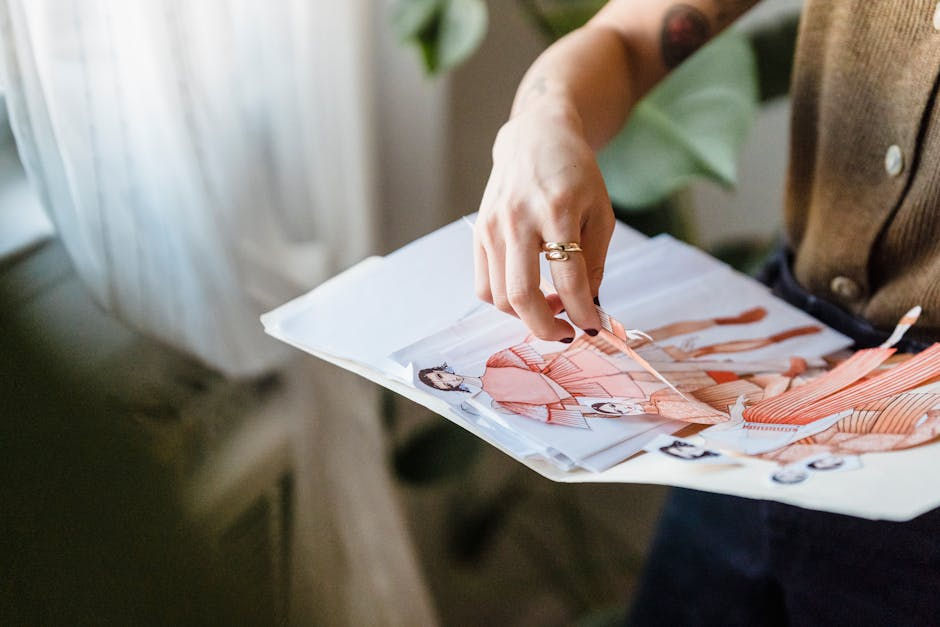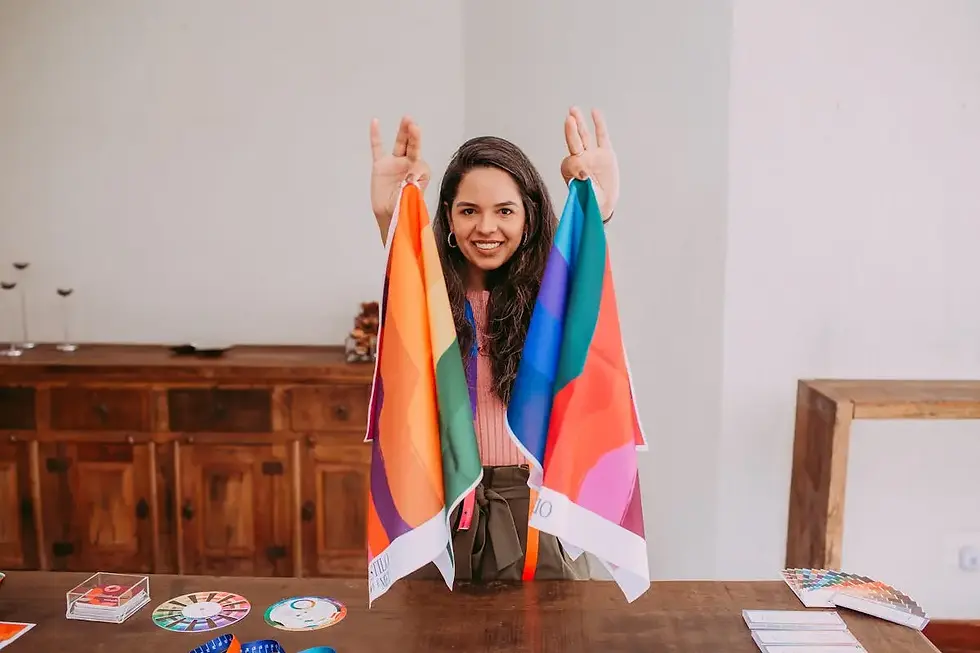Cultivating Creativity in Fashion Design: Tips for Aspiring Designers
- Lauren Jones

- Jul 29, 2024
- 5 min read
Embarking on a creative journey in the dynamic world of fashion design can be both exhilarating and challenging. From conceptualizing unique designs to bringing them to life on the runway, the process of cultivating creativity in fashion design is a fascinating exploration of innovation and artistic expression. Aspiring designers looking to make their mark in the industry often seek inspiration and guidance to fuel their passion and drive. In this blog, we delve into the essence of creativity in fashion design and provide valuable tips to help aspiring designers unlock their full potential.

Exploring the Creative Process in Fashion Design
The creative process in fashion design is a multifaceted journey that involves a seamless blend of inspiration, ideation, and execution. Designers often start by immersing themselves in various sources of inspiration, from art and nature to culture and architecture. This initial phase of exploration lays the foundation for creativity to flourish, allowing designers to synthesize diverse influences into cohesive design concepts.
As the creative vision takes shape, designers move on to the ideation stage, where sketches, mood boards, and fabric samples come together to form a cohesive design narrative. This stage is crucial in translating abstract ideas into tangible creations, giving designers a roadmap to follow as they bring their designs to life.
The execution phase brings the design to fruition, where meticulous craftsmanship, attention to detail, and technical expertise come into play. From pattern-making and draping to sewing and finishing, each step in the production process is a testament to the designer's skill and creativity. The final result is a harmonious fusion of artistry and innovation that captivates and inspires.
Throughout the creative process, designers must embrace spontaneity, adaptability, and a willingness to explore new ideas. Creativity thrives in an environment that encourages experimentation and pushes boundaries, allowing designers to challenge conventional norms and redefine the art of fashion design.
By understanding the nuances of the creative process and honing their craft, aspiring designers can unlock a world of possibilities in fashion design. With a solid foundation in creativity and a passion for innovation, designers can navigate the intricate terrain of the fashion industry and carve out their own unique path to success.
Inspiration Sources for Fashion Designers
Inspiration is the lifeblood of creativity in fashion design, fueling the imagination and driving innovation. Fashion designers draw inspiration from a myriad of sources, ranging from art movements and historical eras to everyday objects and personal experiences. Each source of inspiration brings a unique perspective and narrative to the design process, shaping the creative vision of the designer.
Nature, with its rich colors, textures, and patterns, often serves as a primary source of inspiration for designers seeking to infuse their creations with organic beauty and fluidity. The intricate structures of plants, the iridescence of seashells, and the changing hues of the sky inspire designers to explore new forms and textures in their designs.
Art, in its myriad forms, offers a treasure trove of ideas and concepts for fashion designers to explore. From classic paintings and sculptures to contemporary installations and digital art, the world of art provides endless possibilities for creative interpretation and reinterpretation. Designers often find inspiration in the works of renowned artists, translating their unique artistic styles into innovative design concepts.
Cultural influences play a significant role in shaping the creative landscape of fashion design, reflecting the traditions, beliefs, and aesthetics of different societies. By drawing inspiration from diverse cultures and traditions, designers can create collections that celebrate global diversity and bridge cultural boundaries through fashion. The fusion of traditional craftsmanship with modern design sensibilities gives rise to culturally rich and visually captivating creations.
Architecture, with its structural forms, geometric patterns, and spatial dynamics, offers a wealth of inspiration for designers looking to explore the intersection of fashion and design. Building facades, interior spaces, and urban landscapes inspire designers to experiment with shape, volume, and proportion, creating garments that resonate with the architectural ethos of balance, harmony, and innovation.
Color Theory and Its Impact on Fashion Creativity
Color theory is a fundamental aspect of fashion design, shaping the mood, tone, and visual impact of garments and accessories. Understanding the principles of color theory is essential for designers to create harmonious color palettes, evoke specific emotions, and communicate distinct narratives through their designs. By harnessing the power of color, designers can elevate their creative vision and imbue their creations with depth and meaning.
The color wheel serves as a foundational tool for designers to explore the relationships between colors and create visually dynamic compositions. Primary colors, secondary colors, and tertiary colors form the building blocks of the color wheel, offering designers a spectrum of possibilities to play with in their design process. By combining complementary, analogous, or monochromatic hues, designers can achieve striking visual contrasts and harmonious color schemes.
Color psychology plays a critical role in fashion design, influencing consumer perceptions, preferences, and purchasing decisions. Certain colors evoke specific emotions and associations, with warm tones like red and orange exuding energy and passion, while cool tones like blue and green convey calmness and tranquility. Designers strategically use color psychology to create designs that resonate with their target audience and convey the desired mood or message.
The impact of color extends beyond aesthetics, influencing the overall brand identity and recognition of fashion labels. Iconic brands often leverage color as a key element of their branding strategy, creating a visual language that is instantly recognizable and evocative. By establishing a coherent color palette and visual identity, designers can strengthen their brand presence and establish a lasting connection with consumers.

Experimentation and Innovation in Design Techniques
Experimentation and innovation are at the heart of pushing the boundaries of traditional design techniques and driving creative evolution in the realm of fashion. Designers who embrace experimentation are unafraid to challenge established norms, explore unconventional materials, and pioneer new construction methods to create avant-garde and visionary designs.
Exploring cutting-edge technologies, such as 3D printing, digital modeling, and virtual reality, allows designers to transcend the limitations of traditional design processes and unlock new realms of creativity. By combining traditional craftsmanship with digital innovation, designers can revolutionize the way garments are conceptualized, prototyped, and produced, leading to a wave of technological advancement in the fashion industry.
Collaborations with artists, scientists, technologists, and other creative professionals provide designers with fresh perspectives, cross-disciplinary insights, and collaborative opportunities to experiment with new ideas and concepts. By merging diverse talents and expertise, designers can break free from creative constraints, spark innovation, and forge uncharted pathways in fashion design.
Sustainable and ethical design practices are driving a paradigm shift in the fashion industry, prompting designers to rethink traditional production methods, materials sourcing, and supply chain management. By prioritizing eco-consciousness, social responsibility, and transparency, designers can pioneer a new era of conscientious design that celebrates craftsmanship, respects the environment, and empowers communities.
The Endless Canvas of Fashion Design
Fashion design is a powerful form of self-expression that allows individuals to showcase their unique vision and creativity to the world. By nurturing a sense of innovation and embracing experimentation, aspiring designers can carve out their own path in the ever-evolving landscape of fashion. The journey of cultivating creativity in fashion design is an ongoing process that requires dedication, hard work, and a willingness to push boundaries. As designers channel their creative energy and stay true to their artistic vision, they have the opportunity to shape the future of fashion and leave a lasting impact on the industry.




Thank you for sharing.
The interview shares a close look into the creative world of the designer, highlighting his ideas, inspirations, and the commitment behind every couture piece. The story also reflects the legacy of Elie Saab, showing how emotion, detail, and elegance guide his fashion journey. His thoughts reveal the value of artistry, heritage, and storytelling in each design. The content brings a clear view of his passion for shapes, fabrics, and timeless beauty, making it useful for anyone who follows luxury style. Ready to explore more? Visit the brand today: https://www.vogue.co.uk/article/cniluxvideo-suzy-menkes-interviews-designer-elie-saab